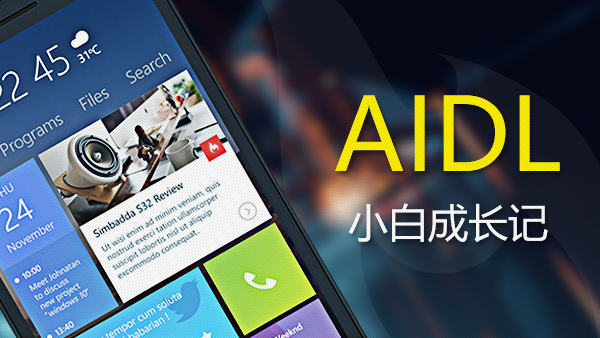handler是什么?
handler是Android提供用来更新UI的一套消息机制,也是一套消息处理的机制(发送和处理消息)
handler原理
handler负责消息发送,looper负责接收handler发送过来的消息,并把消息发送给handler,messageQueue存储消息的容器
这里先说明一下ThreadLocal,主要在线程中保存变量信息,主要有两个比较重要的方法,一个是get方法,一个是set方法
public void set(T value) {
Thread currentThread = Thread.currentThread();
Values values = values(currentThread); if (values == null) {
values = initializeValues(currentThread);
}
values.put(this, value);
}set方法设置当前线程的值,使用键值对的形式存储Thread和looper之间的关系,Thread作为key,looper作为value
public T get() { // Optimized for the fast path.
Thread currentThread = Thread.currentThread();
Values values = values(currentThread); if (values != null) {
Object[] table = values.table; int index = hash & values.mask; if (this.reference == table[index]) { return (T) table[index + 1];
}
} else {
values = initializeValues(currentThread);
} return (T) values.getAfterMiss(this);
}get方法就是取出当前线程对应的looper,也就是说ThreadLocal是负责thread和looper之间的关系的
下面看一下Looper.prepare()方法
private static void prepare(boolean quitAllowed) { if (sThreadLocal.get() != null) { throw new RuntimeException("Only one Looper may be created per thread");
}
sThreadLocal.set(new Looper(quitAllowed));
}
默认情况下ThreadLocal是没有存储的,所以要创建一个新的looperprivate Looper(boolean quitAllowed) {
mQueue = new MessageQueue(quitAllowed);
mThread = Thread.currentThread();
}默认情况下ThreadLocal是没有存储的,所以要创建一个新的looper
private Looper(boolean quitAllowed) {
mQueue = new MessageQueue(quitAllowed);
mThread = Thread.currentThread();
}从looper方法中,创建了一个MessageQueue,在looper中维护着一个消息队列
知道了looper和MessageQueue之后,究竟handler跟这两者有什么关系呢,继续看源码
public Handler(Callback callback, boolean async) { if (FIND_POTENTIAL_LEAKS) { final Class<? extends Handler> klass = getClass(); if ((klass.isAnonymousClass() || klass.isMemberClass() || klass.isLocalClass()) &&
(klass.getModifiers() & Modifier.STATIC) == 0) {
Log.w(TAG, "The following Handler class should be static or leaks might occur: " +
klass.getCanonicalName());
}
}
mLooper = Looper.myLooper(); if (mLooper == null) { throw new RuntimeException( "Can't create handler inside thread that has not called Looper.prepare()");
}
mQueue = mLooper.mQueue;
mCallback = callback;
mAsynchronous = async;
}首先调用Looper.myLooper()
public static @Nullable Looper myLooper() { return sThreadLocal.get();
}获得当前的looper对象,通过looper拿到MessageQueue,就完成了handler和looper之间的关联
下面继续看handler的消息发送
public boolean sendMessageAtTime(Message msg, long uptimeMillis) {
MessageQueue queue = mQueue; if (queue == null) {
RuntimeException e = new RuntimeException( this + " sendMessageAtTime() called with no mQueue");
Log.w("Looper", e.getMessage(), e); return false;
} return enqueueMessage(queue, msg, uptimeMillis);
}先获得当前的消息队列,如果队列为空就抛出异常,不为空,向消息队列中插入消息
private boolean enqueueMessage(MessageQueue queue, Message msg, long uptimeMillis) {
msg.target = this; if (mAsynchronous) {
msg.setAsynchronous(true);
} return queue.enqueueMessage(msg, uptimeMillis);
}插入消息之前就指定消息发送给谁(msg.target),默认情况下发送给自己的handler,然后把消息放入队列中,handler就完成了发送message到MessageQueue的过程
那么消息又是如何轮询的呢?
public static void loop() { final Looper me = myLooper(); if (me == null) { throw new RuntimeException("No Looper; Looper.prepare() wasn't called on this thread.");
} final MessageQueue queue = me.mQueue; // Make sure the identity of this thread is that of the local process,
// and keep track of what that identity token actually is.
Binder.clearCallingIdentity(); final long ident = Binder.clearCallingIdentity(); for (;;) {
Message msg = queue.next(); // might block
if (msg == null) { // No message indicates that the message queue is quitting.
return;
} // This must be in a local variable, in case a UI event sets the logger
Printer logging = me.mLogging; if (logging != null) {
logging.println(">>>>> Dispatching to " + msg.target + " " +
msg.callback + ": " + msg.what);
}
msg.target.dispatchMessage(msg); if (logging != null) {
logging.println("<<<<< Finished to " + msg.target + " " + msg.callback);
} // Make sure that during the course of dispatching the
// identity of the thread wasn't corrupted.
final long newIdent = Binder.clearCallingIdentity(); if (ident != newIdent) {
Log.wtf(TAG, "Thread identity changed from 0x"
+ Long.toHexString(ident) + " to 0x"
+ Long.toHexString(newIdent) + " while dispatching to "
+ msg.target.getClass().getName() + " "
+ msg.callback + " what=" + msg.what);
}
msg.recycleUnchecked();
}
}通过myLooper()方法获取当前looper,进而获得当前的消息队列,然后通过MessageQueue的next方法获取消息,消息为空时返回,不为空时,调用handler的dispatchMessage(msg)方法,然后这个过程一直循环
public void dispatchMessage(Message msg) { if (msg.callback != null) {
handleCallback(msg);
} else { if (mCallback != null) { if (mCallback.handleMessage(msg)) { return;
}
}
handleMessage(msg);
}
}首先查看msg.callback是否为空,不为空时去调用handleCallback(msg),这个方法在handler的构造方法中存在,可以实现消息的拦截;为空只就
调用handleMessage(msg),这个方法都是大家熟悉的,不在描述,整体的handler的原理就描述到这。
作者:Android开发架构
链接:https://www.jianshu.com/p/368176aac76f

 随时随地看视频
随时随地看视频




